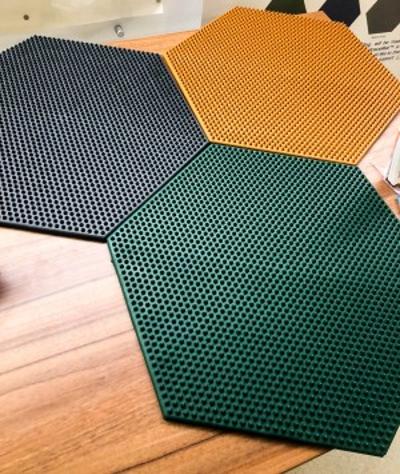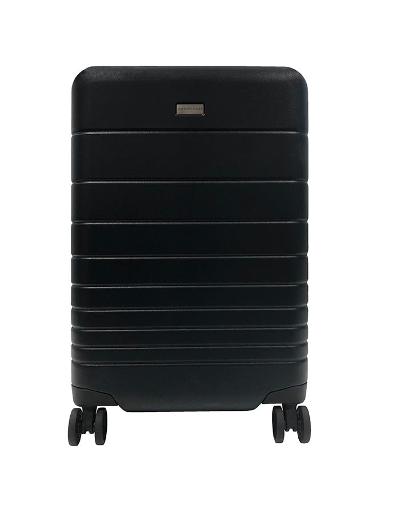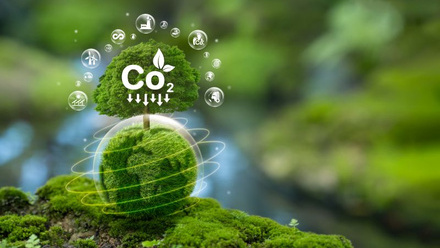Graphene goes green
How is graphene contributing to the sustainability agenda? Matthew Smith, Partner and Patent Attorney at Mewburn Ellis, UK, highlights some recent inventions and the intellectual property considerations.

Graphene technologies are hitting the ‘tipping point’, suggests James Baker, CEO of Graphene@Manchester – and he should know. In just over 15 years since graphene was isolated at the University of Manchester, UK, there has been an explosion in research related to the material. Like silicon semiconductors before it, graphene is changing the game in many fields, from aviation to smartwear.
Its ability to enhance, suppress or add to physical properties makes it a popular research subject. Often, with graphene enhancement, the same product properties can be achieved with an improved environmental footprint – no loss of quality, but a significant improvement in sustainability.
Constructing an alternative
Take the construction sector – it is thought that concrete production accounts for 7% of global carbon emissions. UK-based company Concrene has a technology to reduce cement consumption, developed by the University of Exeter, UK. Their recently published patent application (WO 2019/175564) describes a reinforced concrete material comprising a cementitious material in which graphene is ‘substantially uniformly distributed’. Such uniform distribution, they suggest, improves compressive strength, flexural strength, heat capacity and water permeability (in that case, by reducing such permeability).
The technology takes advantage of graphene’s high surface energy, encouraging calcium silicate hydrate bonding and particle growth. The research suggests construction concrete specifications could be met using only 50% of the traditionally required cement, thereby significantly reducing carbon dioxide emissions from the construction sector.
From an intellectual property (IP) perspective, the patent application highlights two issues that are always on the minds of patent attorneys. Firstly, it includes claims to both a material (product) and a method (process). This is both permissible and advantageous. It protects various aspects of the ‘invention’ for ease of enforcement – product claims are generally thought easier to enforce than method claims. Also, if it is discovered that similar products are known in the prior art, the method can be used as a back-up to give IP protection.
Secondly, it shows the difficulties that can be faced in defining products in which the microstructure is not 100% predictable or even known. Claim one of the application notes that graphene is ‘substantially uniformly distributed’. Some patent offices may ask what ‘substantially’ means, or indeed what ‘uniform’ means in this context. Such objections are pervasive in the materials science field, particularly when it comes to composites, alloys, or other materials where the nanoscale may be variable. It is another reason why having multiple types of claims is important, to give plenty of options for amendment as the procedure moves along.
Meeting the brief
At the University of Manchester, several new products have recently emerged that use graphene to help improve recycled materials. GraphCase is a patent-pending suitcase that uses graphene to enhance the strength of recycled plastics, allowing the case to be made entirely of recycled material without any loss of property. Its creators suggest that it is 60% stronger and 20% lighter than comparable cases, all while being responsible for 50% less carbon dioxide emissions.
Another invention is SpaceMat – flooring developed by Dr Vivek Koncherry to improve the recyclability of rubber, especially tyres. Disposal of tyres is notoriously difficult – they are banned from landfill in the UK and EU, while roughly 1bln reach the end of their life each year.
While tyres can be refurbished or incinerated, a preferred recycling route may be through reduction to crumb rubber – anything to promote this route has clear knock-on benefits for the environment, not least because a huge number are shipped abroad for incineration.
The SpaceMat uses up to 80% recycled rubber, the final 20% is graphene-enhanced natural rubber. The flooring is said to have a compressive strength twice that of comparable floor matting, with a commensurate improvement in durability.
This type of research is not solely the preserve of new companies. It has been reported that global giants such as Tetra Pak are also looking at ways in which graphene can help reduce the carbon footprint of their products – in this case, packaging and packing equipment. Advances in these types of day-to-day products have a real potential to make a difference, since they can be deployed on a large scale.

While the field of graphene composites is blooming in terms of patent protection, with around 2,500 applications published in 2019 alone, there is still plenty of space to carve out protection for innovative formulations, uses and manufacturing methods. The technologies mentioned here offer new uses of graphene-enhanced products. Sometimes, more targeted patent protection, specifically directed to a commercial item, can be easier to obtain than broader protection directed to a core concept or idea. The amount of prior art faced is lower, yet copycat competitors are still discouraged. And many countries offer tax incentives to encourage even very narrow patents that cover commercial products or methods.
Cleaning up
Mass deployment of graphene-based technology can also be envisaged in environmental ‘cleaning’, or improvement. Atmospheric pollution is a major health and environmental concern – the World Health Organisation estimates that around 10% of deaths worldwide can be attributed to diseases caused by air pollution. Graphene can help clean this up.
In late 2019, scientists from an international group made up of the University of Cambridge, UK, Italcementi HeidelbergCement Group and other partners published research showing that a titania-graphene composite can deliver a 70% improvement in photocatalytic nitrogen oxide degradation as compared to standard titania. This is accredited to ultrafast electron transfer from the titania to the graphene flakes, greatly limiting exciton recombination and thereby increasing the efficiency of radical generation.
The composite can act passively, and therefore could be a coating for buildings or streets for a renewable form of air cleaning in polluted areas.
Another area where the world is likely to appreciate cleanliness is water. It is entirely plausible that potable water will become ever scarcer in the future, so ways of generating it are increasingly of interest.
Graphene and its derivatives have shown promise in water desalination and filtration. Recent work from the Technical Institute of Physics and Chemistry, Chinese Academy of Sciences, has coined the term ‘planar heterogeneous interface desalination’, using modified graphene oxide membranes in combination with a forward electric field to generate a transition zone between Na+ and Cl- rich salt water zones. Fresh water can be extracted from the transition zone. The technique has high-water flux, low-energy consumption, and low minimum working pressure. This approach might lead to enhanced portable and low-energy water purification devices which will be vital in years to come.
While there are plenty of patents surrounding water filtration and desalination using graphene and its derivatives, the novel approach taken here should provide an important distinction in helping the inventors protect their IP. Water purification is an interesting area for IP because of the jurisdictional nature of patents. If you want protection in a country, you need a patent covering that country. Therefore, patent applicants need to focus on jurisdictions where their products are likely to be made, sold and used. Often this is based on a broad economic assessment, but in some technology areas a more discerning approach is needed.
Taking the example of water desalination, of course places like the USA, China and Europe will be big markets. In addition, though, countries like India and Australia, or areas of the Middle East and Africa, may be of increased interest. The choice of countries needs to be made relatively early in the patent procedure, so innovators need to formulate a clear idea of their target products and markets as soon as possible.
Power grab
The solar panel market is already well established, but graphene can also make an impact here. There has been a long search for alternatives to silicon-based cells for solar generation. A promising line of investigation is perovskites, particularly tandem cells comprising silicon and perovskite layers. These are theoretically effective, but processing limitations have hindered their use.
To address this, researchers from BeDimensional, a spin-out company of the University of Rome Tor Vergata, the Italian Institute of Technology (IIT), have created tandem solar cells with two ‘sub-cells’ – one perovskite-based and one silicon-based. These sub-cells are mechanically stacked. Graphene comes in as a dopant in the electron selective layer included in the perovskite top sub-cell and contributes to its enhanced efficiency. The inventors believe there may yet be more uses of graphene in perovskite-based solar cells.
Sometimes, there is a range of developments available in a certain technology, or a specific development can stimulate a cascade of progress. In such cases, building a wide family of IP protection, while costly, is a strategy that can pay off in the long run. For example, when a competitor not only has to find a way around a patent for a material, but also patents for an electron elective layer structure, a sub-cell, and a complete cell architecture, the negotiating position for licensing is much stronger for the patent holder.
The spread of graphene-based technology through the industrial and scientific world seems still to be accelerating. In the next few years, we should start to see the impact of such advances in the commercial world, and hence on the environment.







